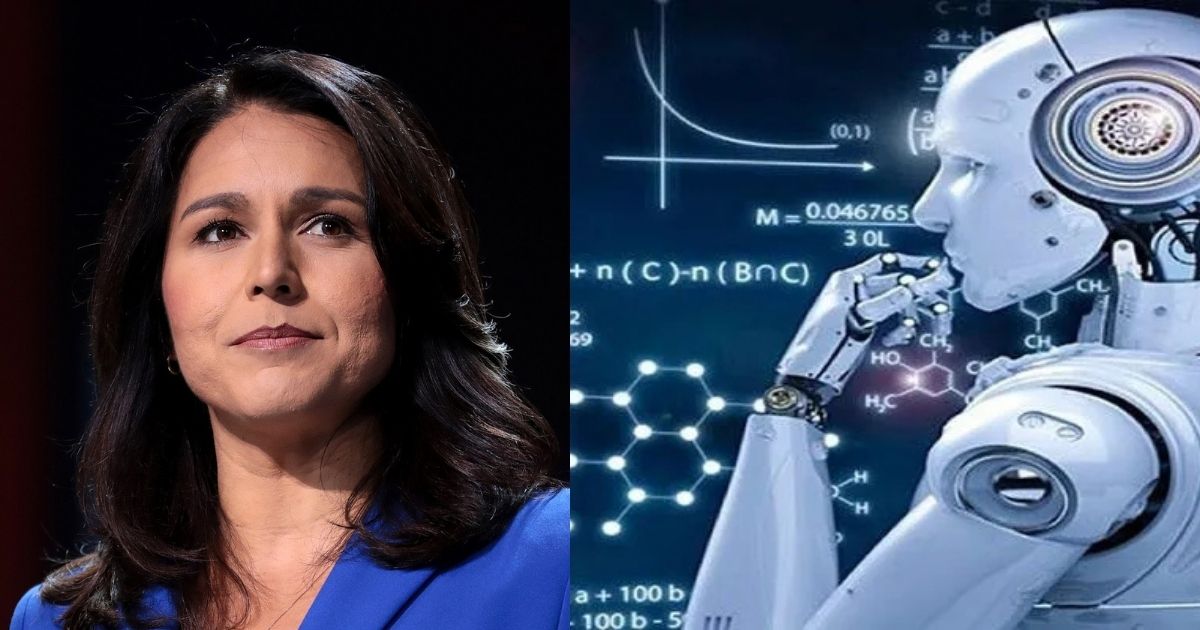As technological advances are being made every day, even the federal government is not untouched by them. Aside from the regular use of AI to write reports and check grammar, which has become a norm almost everywhere, the White House has taken it a step further.
At a recent tech summit in Washington, D.C., Director of National Intelligence Tulsi Gabbard made an important statement. She revealed a groundbreaking shift in how the U.S. government processes sensitive archival materials.
Gabbard disclosed that agencies under the department took help of artificial intelligence (AI) to assist them in the rapid review and partial declassification of JFK documents. In March 2025, roughly 80,000 pages of documents related to the assassination of President John F. Kennedy were made public.
President Trump gave the agency only a few days time to complete the mammoth task of reviewing the documents. Traditionally, such document reviews rely heavily on human analysts.
Gabbard Admits to Asking AI What to Classify in JFK Files https://t.co/xAetZjwMnZ via @thedailybeast > #jfkfiles #declassification #AI #opengov #JFKFacts @ODNIgov @GOPoversight @USNatArchives
— Dan Currie (@poeboston) June 11, 2025
These analysts would go through each page to identify potentially sensitive information.
However, Ms Gabbard stated that this time-consuming process was mostly done with the help of AI tools. She also stated that using these tools drastically decreased the time that is usually consumed with such tasks.
The AI system scanned and analyzed all the documents. It then flagged sections that may warrant redaction or classification based on patterns and content.
“We were able to do in weeks what used to take months,” Gabbard noted. “AI helped us speed up the vetting process without compromising security.”
President Trump on JFK Files: “We are tomorrow announcing and giving all of the Kennedy files…I don’t believe we are are going to redact anything…it’s going to be very interesting…approximately 80,000 pages.” pic.twitter.com/0NW4QdLSzL
— CSPAN (@cspan) March 17, 2025
The release of the JFK files in March 2025 came shortly after Donald Trump was sworn in for his second term. During his campaign, Trump made a promise to fully release all remaining documents related to the Kennedy assassination. He also accused the previous administration of concealing the truth.
This time around when Donald Trump took the office, he soon ordered the publication of tens of thousands of pages. However, public reactions have been mixed.
There were many who praised the apparent commitment to transparency and fulfillment of campaign promise. However there were those who questioned whether the sheer volume of the complex documents should be allowed for public viewing.
Tulsi Gabbard used AI to figure out what to declassify in JFK files https://t.co/AqCpZJl3rG
— #TuckFrump (@realTuckFrumper) June 11, 2025
There were still redactions and vague passages that further raised the question of whether the total transparency was true. Critics have argued that AI-flagged redactions could have inadvertently hidden key information or released information that should have been redacted.
These reports leaked names of several spies. Their families found out about the status through these documents which shouldn’t have happened. These documents also contained the social security number of several people involved in the JFK case. So much so that even the social security number of Donald Trump’s formal lawyer was also leaked and he had threatened to take action.
Social Security numbers and other private information unmasked in JFK files https://t.co/GSt1NiBTQg Trump campaign lawyer Joseph diGenova info unmasked by his Scammer and Chief! 😂😂😂😂He don’t think DOGE is such a good idea now! pic.twitter.com/TxEdVbylqd
— Gloria Ruffin-Germani (@glogirl92) March 20, 2025
Tulsi Gabbard outlined a broader ambition for AI across U.S. intelligence agencies. She announced the launch of a classified chatbot built for secure internal use. This would avoid instances such as when the chats on Signal between Pete Hegseth and other high ranking officials were leaked.
She also revealed plans for more private-sector collaborations to enhance intelligence capabilities.
Her overarching vision is to free up human analysts to focus on complex, high-priority intelligence tasks. She plans AI to handle labour-intensive and repetitive processes like document sorting, pattern recognition, and risk assessment.
“Analysts shouldn’t be buried under piles of paperwork. AI can handle that. Let’s put our people where they’re needed most,” Gabbard stated during her keynote.
In yesterday’s Oversight Committee hearing, I asked: What risks do we face in ensuring federal AI doesn’t enable purges, distortions, or discrimination?
The Pentagon’s own AI system removed a tribute page for Jackie Robinson while scanning for DEI. We are risking our history… pic.twitter.com/hIZubckcAm
— Congressman Wesley Bell (@RepWesleyBellMO) June 6, 2025
Despite her enthusiasm, Gabbard’s strategy has sparked concern among critics. The main argument against AI is that it may be efficient, but it is still fallible. Many have warned of algorithmic bias, false positives, and the lack of transparency in how AI decisions are made.
Nonetheless, Gabbard remains firm in her belief that AI represents the future of intelligence. As the government ventures further into tech-driven analysis, her approach could redefine how secrets are managed and eventually revealed.









